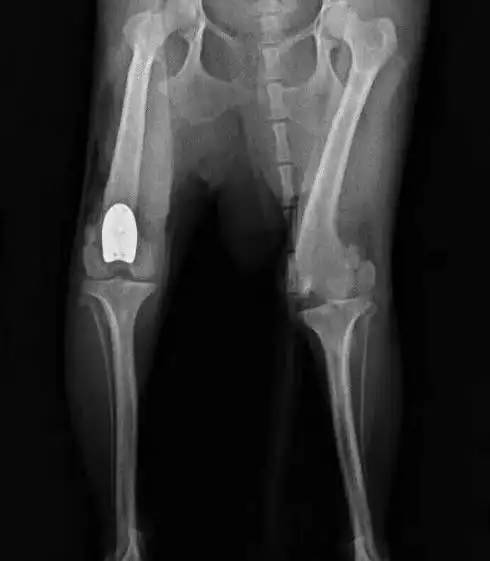A luxating patella (or “trick knee”) is a common orthopedic condition in puppies where the kneecap (patella) slips out of place. Small breeds like Chihuahuas, Pomeranians, Yorkies, and French Bulldogs are most prone to it, but it can affect any dog. This guide explains how to recognize the signs, diagnose the issue, and explore treatment options.
What Is Luxating Patella?
The patella normally glides in a groove at the bottom of the femur (thigh bone). In luxating patella, the kneecap pops out of this groove, causing pain and lameness.
Grades of Severity
| Grade | Description |
|---|---|
| Grade 1 | Kneecap pops out occasionally but goes back on its own. |
| Grade 2 | Kneecap dislocates frequently but can be manually repositioned. |
| Grade 3 | Kneecap stays out of place most of the time but can be pushed back. |
| Grade 4 | Kneecap is permanently dislocated and cannot be repositioned. |
Grades 1-2 may improve with conservative treatment, while Grades 3-4 often require surgery.
Signs Your Puppy Might Have Luxating Patella
1. Skipping or Hopping on a Back Leg
- The most common sign! Your puppy may suddenly lift a hind leg while running, then put it back down after a few steps.
2. Occasional Limping
- Your puppy may favor one leg intermittently, especially after activity.
3. “Clicking” or “Popping” Sound
- You might hear a soft click when the kneecap moves in and out of place.
4. Difficulty Jumping or Climbing Stairs
- Puppies with luxating patella may hesitate to jump or avoid stairs.
5. Sitting Abnormally (“Frog-Legged”)
- Some puppies sit with their affected leg sticking out sideways instead of tucked under.
6. Pain or Swelling (In Severe Cases)
- If the kneecap is chronically dislocated, the knee may swell or become painful.
How to Check for Luxating Patella at Home
You can perform a gentle examination (but always confirm with a vet):
- Have your puppy stand or lie on their side.
- Gently feel the kneecap on the hind leg.
- Apply slight pressure to see if it moves abnormally.
- Watch for signs of discomfort (whining, pulling away).
⚠️ Do not force the kneecap—if you suspect an issue, see a vet.
Diagnosis: What the Vet Will Do
- Physical Exam: The vet will manipulate the knee to check for instability.
- X-rays: To rule out other issues (hip dysplasia, fractures).
- Grading the Condition: Determines if surgery is needed.
Treatment Options
1. Conservative Management (Grades 1-2)
✔ Weight management (extra pounds stress the joints)
✔ Joint supplements (glucosamine, chondroitin)
✔ Controlled exercise (avoid high-impact play)
✔ Physical therapy (swimming helps strengthen muscles)
2. Surgery (Grades 3-4 or Persistent Pain)
- Tibial Tuberosity Transposition (TTT): Realigns the kneecap groove.
- Trochleoplasty: Deepens the groove to keep the patella in place.
- Recovery: 6-8 weeks of restricted activity.
Preventing Worsening of Luxating Patella
- Avoid obesity (extra weight strains joints).
- Use ramps instead of letting your puppy jump on/off furniture.
- Provide joint-supportive diets (omega-3s, glucosamine).
When to See a Vet Immediately
🚨 Sudden inability to bear weight (possible ligament tear)
🚨 Constant crying or severe limping
🚨 Swollen, hot, or red knee joint
Long-Term Outlook
- Grade 1-2: Often managed well without surgery
- Grade 3-4: Surgery has 90% success rate
- Arthritis risk increases with age (Manage with supplements)
Final Thoughts
Many puppies with mild luxating patella live happily with proper care, while severe cases may need surgery. Early detection is key—if your puppy shows hopping, limping, or discomfort, consult your vet.
Did your dog have luxating patella? Share your experience in the comments! 🐾



